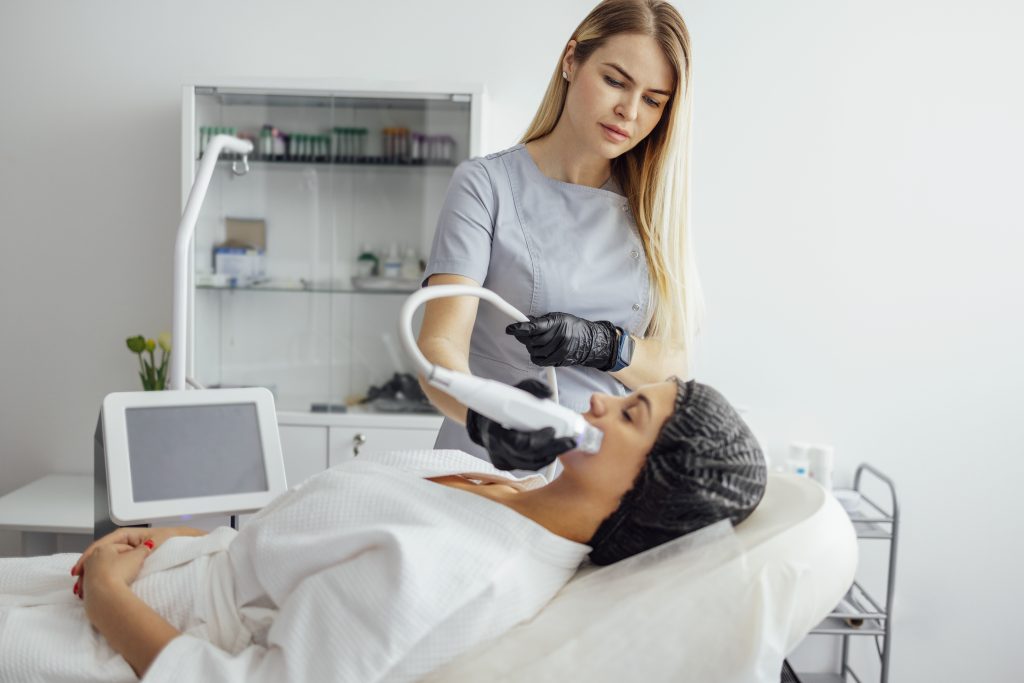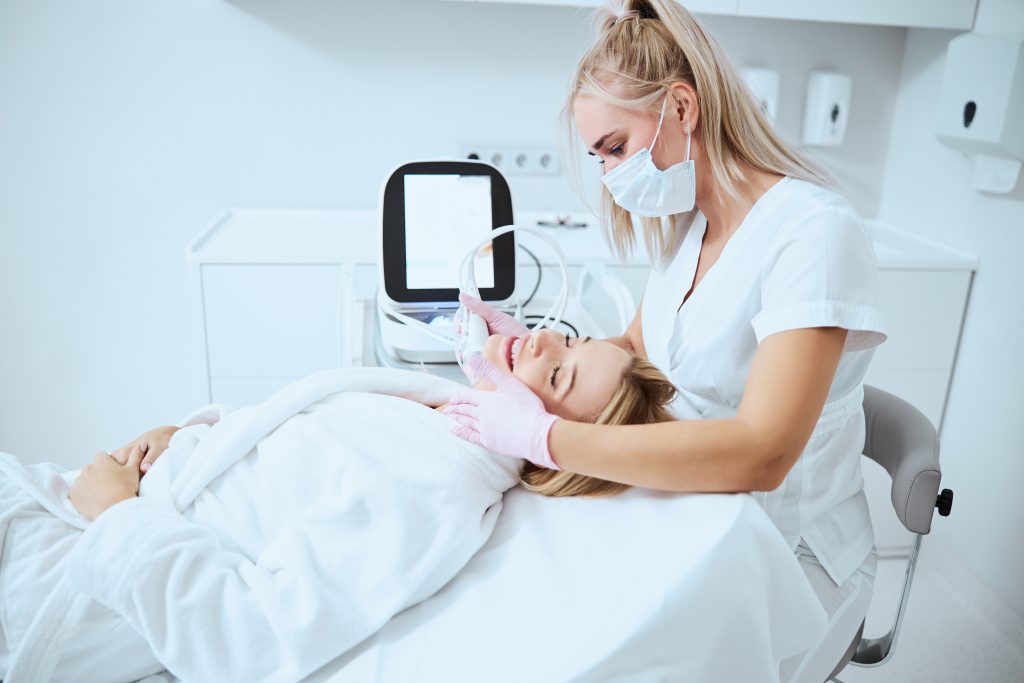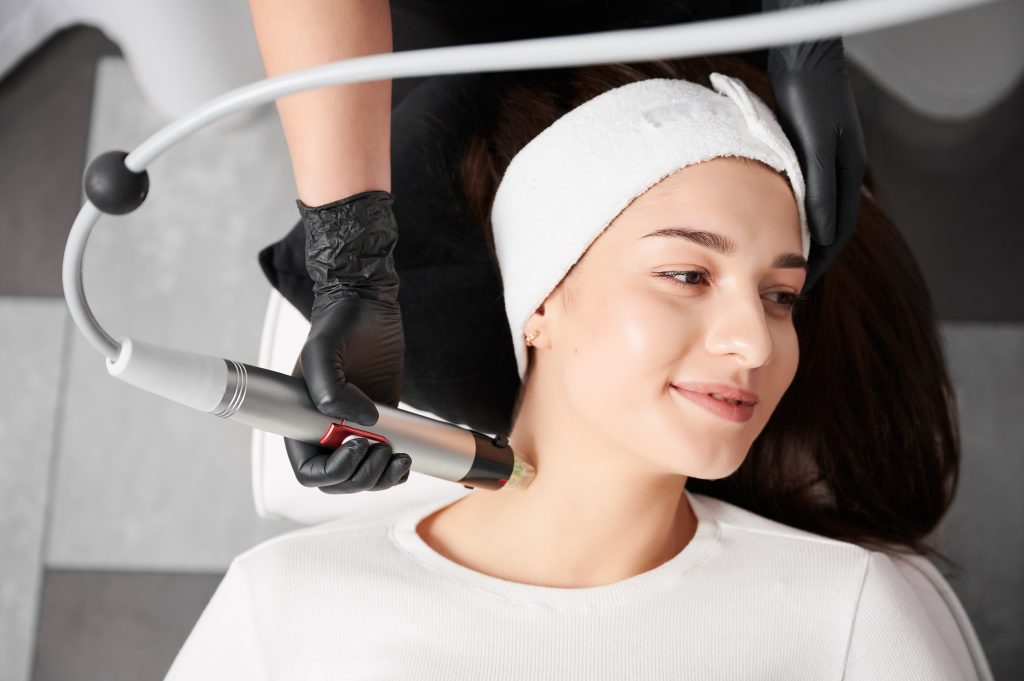Microneedling
Microneedling is a procedure that involves the use of small needles, designed to be minimally invasive. It is effective in diminishing the visibility of skin problems such as acne scars, stretch marks, and wrinkles. While most individuals undergo microneedling for the purpose of improving their appearance, it can also offer relief for certain medical conditions.

What is microneedling?
Microneedling is a cosmetic procedure that is not very invasive and is used to address skin issues by promoting the production of collagen. It is also called collagen induction therapy and involves making tiny punctures in the skin using small, sterilized needles.
The American Academy of Dermatology Association (AAD) states that microneedling can aid in the skin’s healing process, leading to a reduction in the visibility of scars and dark spots while enhancing skin flexibility.
Additionally, while further studies are required, a review conducted in 2021 indicates that microneedling could potentially stimulate hair regrowth for individuals experiencing alopecia.
A dermatologist can assist you in determining if this is the proper choice for your skin.
Microneedling Benefits
the procedure may help with issues like:
- Acne
- Hair loss (also called alopecia)
- Hyperpigmentation refers to the presence of dark spots or patches on the skin.
- Large pores
- Reduced skin elasticity
- Scars
- Stretch marks
- Sun damage
- Fine lines and wrinkles
How does microneedling work?
By creating skin trauma, microneedling stimulates the production of collagen as well as other substances that aid in the healing process.
Collagen is a crucial protein that plays a vital role in maintaining a youthful appearance by promoting a firm, smooth, and flexible texture of the skin.
The process of aging leads to a decrease in collagen levels within the skin, resulting in the development of wrinkles and other indicators associated with getting older.
Skin may experience a reduction in collagen levels as a result of various injuries, including acne scarring, stretch marks, and other types of scars.
It is crucial to understand that microneedling is not a rapid solution since it involves the regeneration of new skin. It may require several months for an individual to witness the complete outcomes of the treatment.

Who shouldn’t have microneedling?
Before undergoing microneedling, it is essential to consult with your healthcare professional if you have:
- Acne or are taking medication for acne.
- Individuals who have blood disorders or are taking anticoagulants, which are medications that inhibit the formation of blood clots.
- People who have cancer and are undergoing treatment with chemotherapy or radiation therapy.
- Recurring skin irritations (contact dermatitis) or fever blisters.
- Your skin has a tendency to form tough, elevated scars.
- Moles, freckles, skin tags, or other growths that show variations in their size, shape, or bleed.
- Skin conditions like eczema or psoriasis.
What is the duration of the effects of microneedling?
As collagen diminishes in your body, the effects will diminish as well. The rate at which collagen is lost varies amongst individuals. In order to reduce the amount of collagen your body loses:
- Protect your skin from the sun
- Don’t smoke
In order to sustain the outcomes, your dermatologist might advise revisiting for an annual microneedling session for maintenance.
Procedure for microneedling

Typically, the doctor will administer a numbing cream to the treatment area around 45 minutes to 1 hour prior to the procedure. This cream helps to numb the skin during the microneedling process, which usually lasts for about 30 minutes.
In the process, a physician employs a tool resembling a pen, equipped with sterilized needles, to create minuscule punctures beneath the skin. These punctures are so tiny that it is unlikely you will perceive them once the procedure is completed.
The doctor typically glides the instrument smoothly across your skin to ensure that the recently revitalized skin appears uniform.
The microneedling session typically takes around 2 hours and can be concluded with the application of a growth serum or a soothing treatment.
Does microneedling have any downtime?
Downtime is minimal.
After receiving the treatment, you might experience some discomfort. Right after microneedling, you may observe redness (for lighter skin tones) or darker shades (for darker skin tones) on the treated area of your skin. The treated skin may have a sunburned sensation, leading to slight discomfort, burning sensations, or swelling.
Typically, these responses fade away within a few days to a week.
To provide comfort for your skin temporarily, your dermatologist might suggest using a cream for post-treatment care.
Even if you experience certain types of discomfort, it is possible for you to resume your daily activities, such as going back to work or school, immediately after undergoing microneedling at your dermatologist’s office.
It is crucial to wait for 24 hours before putting on any makeup.
MICRONEEDLING RESULTS
A few of the most frequent outcomes that our patients encounter include:
- Skin that is firmer and more elevated as a result of increased collagen synthesis.
- Minimized pore size
- Improvement with fine lines and wrinkles
- Reduction of acne scars
- Decrease in the visibility of scars and stretch marks caused by surgery.
- Reduction in the visibility of cellulite
- Improvement with hair loss from alopecia
Microneedling is suitable for nearly all skin types and offers other advantages, such as visible and noticeable skin improvement within a few days after the procedure, as well as a quick treatment duration.
Treatment in Türkiye:
The medical staff of surgical teams, doctors, and consultants at REHABTÜRK can provide the best treatment options and free consultations, striving to stay up-to-date on the latest medical technologies and methods.
